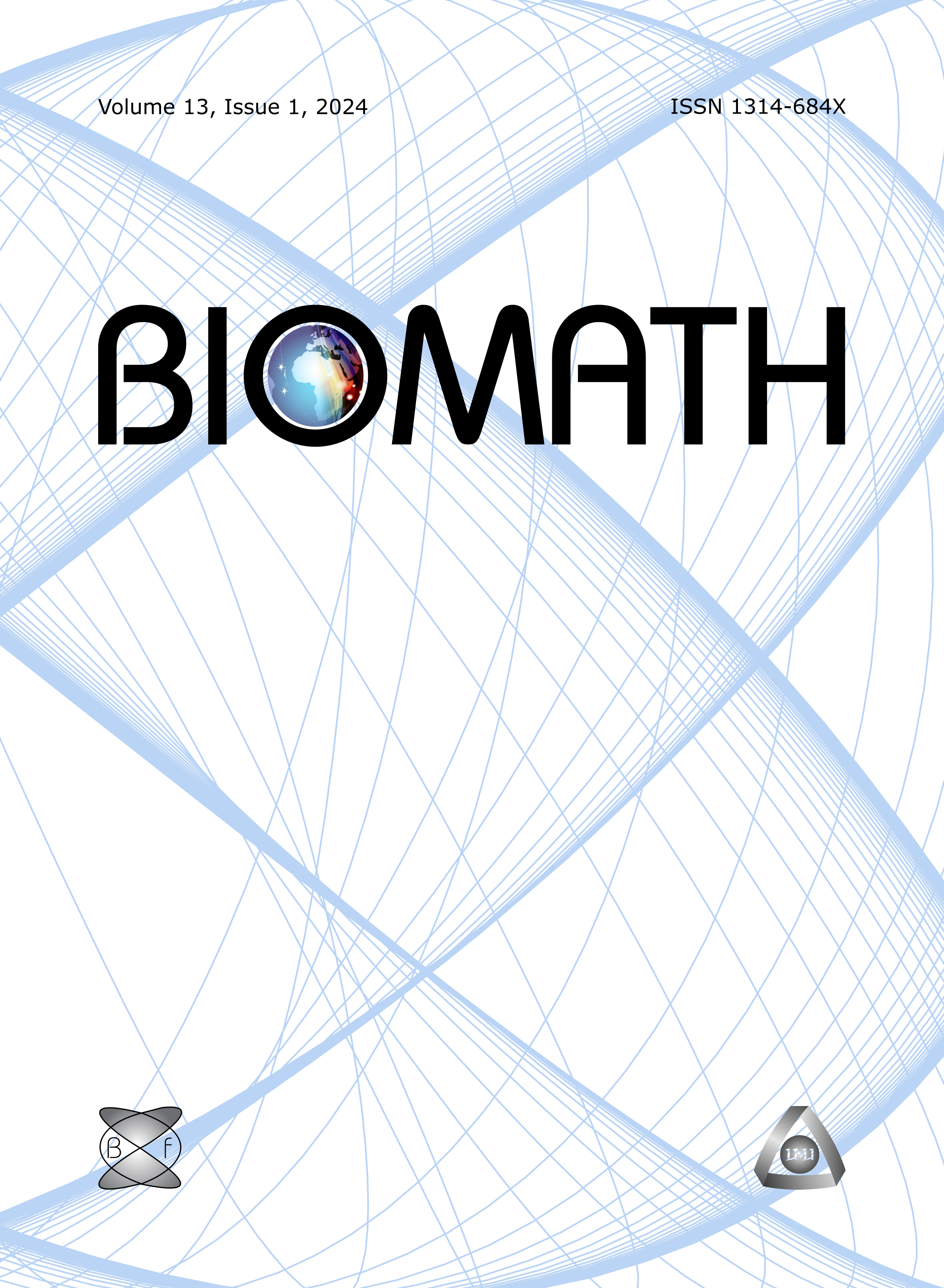Dynamics of an "SAIQR" Influenza Model
DOI:
https://doi.org/10.11145/j.biomath.2014.09.251Keywords:
epidemics, periodic, multiple time scales, influenza, infectious diseases, quarantine-isolation, recurrent outbreaksAbstract
Modifications or extensions of the classical Susceptible-Infected-Recovered (SIR) model that account for a Quarantine (Q) class have shown to be capable of supporting recurrent, that is, periodic disease outbreaks. The fact that in such outbreaks a significant proportion of individuals escape symptomatic or experience mild infections has not been explored extensively. Motivated by our interests on the transmission dynamics and evolution of influenza A in human populations, we proceed to explore the role of an asymptomatic class (A) of individuals on the long-term transmission dynamics of influenza. We focus on a Susceptible-Asymptomatic-Infectious-Quarantine-Recovered (SAIQR) model that limits the interactions of Q-individuals and assumes that A-individuals are infectious, possibly not as infectious as those with clear symptoms. The analysis is carried out taking advantage of the significant time scale differences provided by the demographic and epidemic processes involved. It is shown that SAIQR models with vital dynamics (births and deaths) support recurrent outbreaks under reasonable disease or intervention periods. Further, we show that recurrence is possible within regions of parameter space that are consistent with influenza A transmission in human populations.
Downloads
Published
Issue
Section
License
The journal Biomath is an open access journal. All published articles are immeditely available online and the respective DOI link activated. All articles can be access for free and no reader registration of any sort is required. No fees are charged to authors for article submission or processing. Online publications are funded through volunteer work, donations and grants.
Authors who publish with this journal agree to the following terms:
- Authors retain copyright and grant the journal right of first publication with the work simultaneously licensed under a Creative Commons Attribution License 4.0 that allows others to share the work with an acknowledgement of the work's authorship and initial publication in this journal.
- Authors are able to enter into separate, additional contractual arrangements for the non-exclusive distribution of the journal's published version of the work (e.g., post it to an institutional repository or publish it in a book), with an acknowledgement of its initial publication in this journal.
- Authors are permitted and encouraged to post their work online (e.g., in institutional repositories or on their website) prior to and during the submission process, as it can lead to productive exchanges, as well as earlier and greater citation of published work (See The Effect of Open Access).

